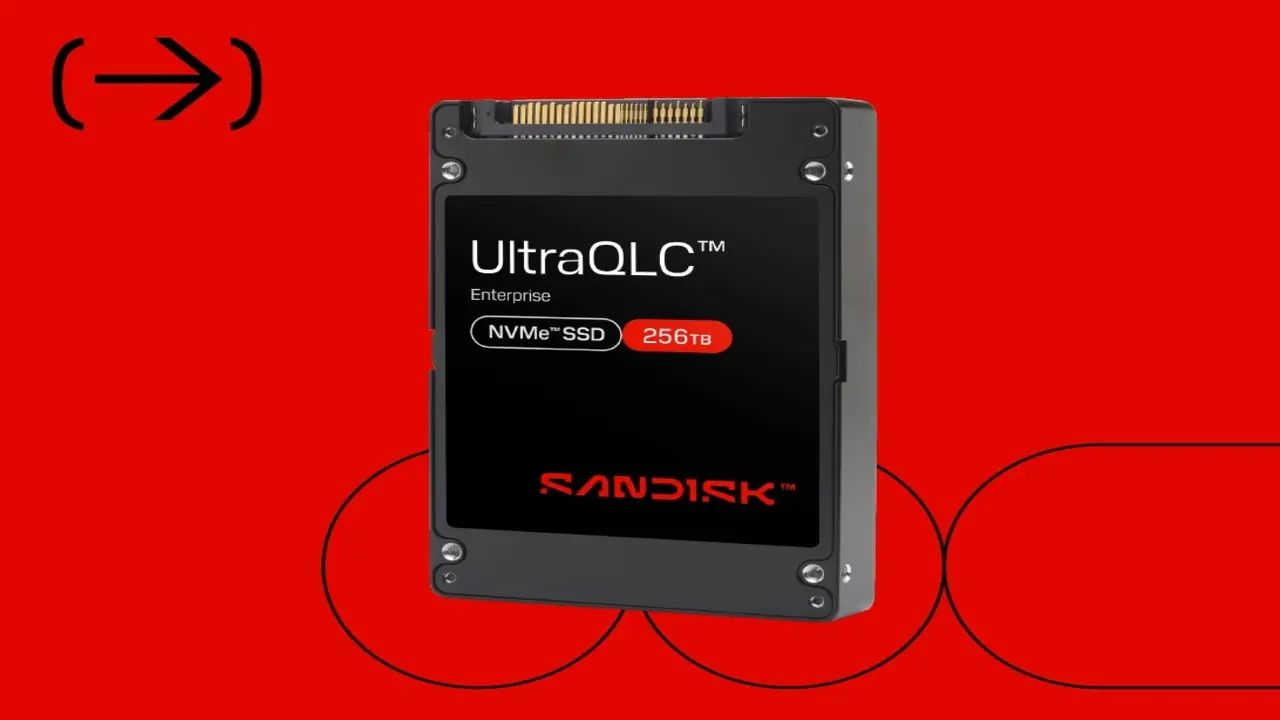Sandisk has announced its next-generation 256-terabyte SSD for data centers. Dubbed UltraQLC, this model is designed to meet the high data density and low latency requirements of artificial intelligence applications and cloud computing infrastructures.
Sandisk Designs 256TB SSD
Equipped with Sandisk’s own BiCS8 QLC NAND chips and custom multi-core controllers, the device will be released in the U.2 form factor. Commercial availability is planned for the first half of 2026.

The 256TB UltraQLC SSD delivers performance improvements of up to 7% in sequential reads, 27% in sequential writes, 68% in random reads, and 55% in random writes compared to previous 128TB models.
This increase is due to the drive’s enhanced architecture with dedicated accelerators and its scalable architecture of up to 64 chips per channel. The new controller architecture can automatically adjust power consumption based on workload, thus improving energy efficiency and endurance and performance.
The UltraQLC architecture is based on 2-terabit QLC chips manufactured with BiCS8 technology. These chips double data density without increasing physical footprint. Furthermore, thanks to Dynamic Frequency Scaling technology, the device can provide up to 10% additional performance at every power level. Another key innovation developed by Sandisk is Direct Write QLC technology.
This system allows direct writes without requiring the SLC caching required by traditional QLC solutions. This feature prevents data loss, particularly during power outages, providing a critical advantage for security and availability in data centers.
With this new 256TB SSD model, Sandisk is addressing data centers seeking a balance of capacity, speed, and security in data storage solutions for AI and cloud infrastructures. The model is expected to be available in different form factors later this year.













